WATER AS A PRISM: GREEK PAVILION AT THE VENICE BIENNALE
Xirómero / Dryland is an interdisciplinary collective work conceived by Thanasis Deligiannis and Yannis Michalopoulos, created along with the artists Elia Kalogianni, Yorgos Kyvernitis, Kostas Chaikalis and Fotis Sagonas for the Greek Pavilion at the 60th Venice Biennale. The project is curated by Panos Giannikopoulos.
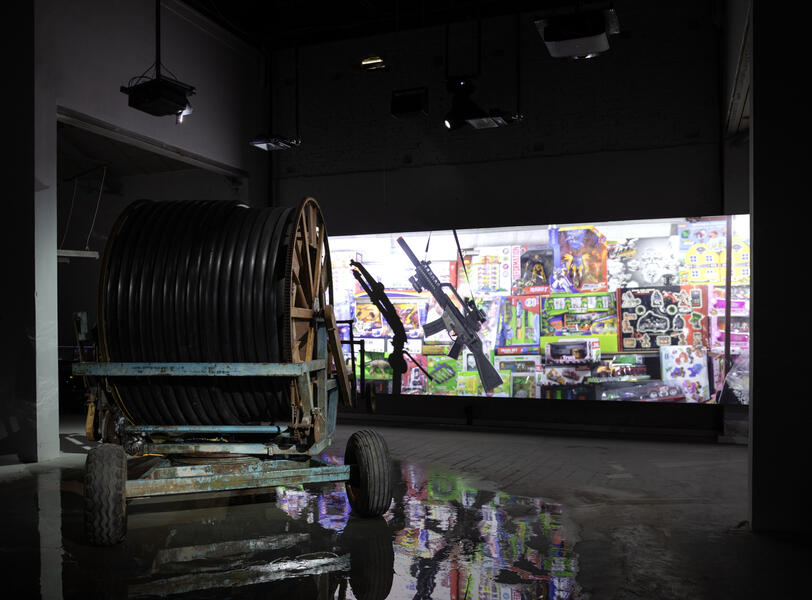
The work consists of a piece of agricultural irrigation equipment which synchronizes the sound, video and lighting environments that make up the installation in real time. It investigates the experience of a village festival by following its course from the village square all the way to its outskirts, and to the surrounding land. More specifically, it draws upon the experience of the panighíria -local festivals- of mainland Greece, Thessaly and the area of Xirómero, in Western Greece, which lends the work its title.
The artists behind the work refer to water as a prism —a way of seeing and thinking with— focusing on its scarcity or abundance, on needing it or wasting it, as well as on its social connotations. The exhaustion of resources is linked here to physical and financial exhaustion. The work navigates the political potential of sound and music and the impact of technology on rural landscapes and cultural diversity.
In between ritual and entertainment, the village festival conveys information and is charged with meaning. It is connected to agricultural work; it is born of —but also begets— the community’s internal time cycle which follows the pace of irrigation and other agricultural tasks. It helps the community form an image of itself. But at the same time contradictory notions coalesce: viewers become participants, on-stage becomes off-stage, the performative gives way to the everyday.
This incessant interaction between ‘representation’ and reality is reproduced within the work itself.
-
Pavilion of GREECE Ξηρόμερο/ DRYLAND. 60th International Art Exhibition - La Biennale di Venezia. Photo: Marco Zorzanello. Courtesy La Biennale.
-
Pavilion of GREECE Ξηρόμερο/ DRYLAND. 60th International Art Exhibition - La Biennale di Venezia. Photo: Marco Zorzanello. Courtesy La Biennale.
-
Pavilion of GREECE Ξηρόμερο/ DRYLAND. 60th International Art Exhibition - La Biennale di Venezia. Photo: Marco Zorzanello. Courtesy La Biennale.
-
Pavilion of GREECE Ξηρόμερο/ DRYLAND. 60th International Art Exhibition - La Biennale di Venezia. Photo: Marco Zorzanello. Courtesy La Biennale.
-
Pavilion of GREECE Ξηρόμερο/ DRYLAND. 60th International Art Exhibition - La Biennale di Venezia. Photo: Marco Zorzanello. Courtesy La Biennale.
-
Pavilion of GREECE Ξηρόμερο/ DRYLAND. 60th International Art Exhibition - La Biennale di Venezia. Photo: Marco Zorzanello. Courtesy La Biennale.
-
Pavilion of GREECE Ξηρόμερο/ DRYLAND. 60th International Art Exhibition - La Biennale di Venezia. Photo: Marco Zorzanello. Courtesy La Biennale.
Xirómero / Dryland also utilizes the particular architectural features of the Pavilion of Greece to evoke by association images of agricultural warehouses or the religious architecture that is so often the backdrop of the panighíri. The watering equipment at the center of the Pavilion delineates a circular perimeter that is the actual space of the installation. The work serves to transfer indoors the outdoor spot where the community comes together —the village square, the place of public assembly. As the watering system comes on, it sets a specific pace and marks the time like a clock or a cassette tape playing, suggesting specific routes for the viewers to follow, encouraging shifts in viewpoint along the way. Xirómero / Dryland steers clear of an aesthetic approach, emphasizing instead the emotional immediacy of the encounter with objects, sounds and images.
Observing gender relations in the context of the panighíri allows us to examine the various possibilities of presenting the self, the different versions of femininity and the manner in which the female body is either revealed or concealed, but also the ambivalent gesture of the subject who chooses to withdraw, opting for absence and its own exclusion from the festivities.
Xirómero / Dryland attempts to create associations between a geographically contextualized experience and the global condition; to facilitate shifts of perspective between dominant and marginalized cultural subjects which seem to open up a liminal space for the articulation of new meanings.
May interest you
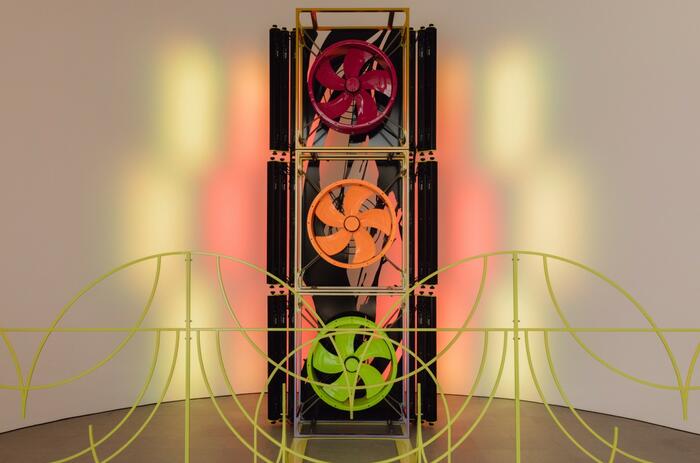
For the 60th International Venice Biennale, Nemes designed the project as an immersive, painting-based Gesamtkunstwerk that expands the genre of painting and extends it to other media. Project curated by Róna Kopeczky.
TECHNO ZEN BY MÁRTON NEMEZ: THE HUNGARIAN PAVILION IN VENICE BIENNALE
For the 60th International Venice Biennale, Nemes designed the project as an immersive, painting-based Gesamtkunstwerk that expands the genre of painting and extends it to other media. Project curated by Róna Kopeczky.

For the 60th International Venice Biennale, Nemes designed the project as an immersive, painting-based Gesamtkunstwerk that expands the genre of painting and extends it to other media. Project curated by Róna Kopeczky.
TECHNO ZEN BY MÁRTON NEMEZ: THE HUNGARIAN PAVILION IN VENICE BIENNALE
For the 60th International Venice Biennale, Nemes designed the project as an immersive, painting-based Gesamtkunstwerk that expands the genre of painting and extends it to other media. Project curated by Róna Kopeczky.
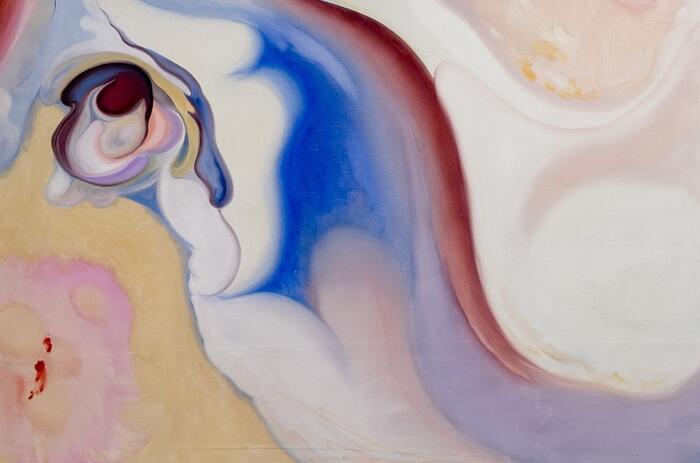
Juana Subercaseaux, a Chilean artist based in Mexico City, presents Esto es Eso, her first exhibition at OMR, showcasing her latest works that intertwine a feminine perspective with the intimate, the mystical, the ephemeral, and the spiritual aspects of nature.
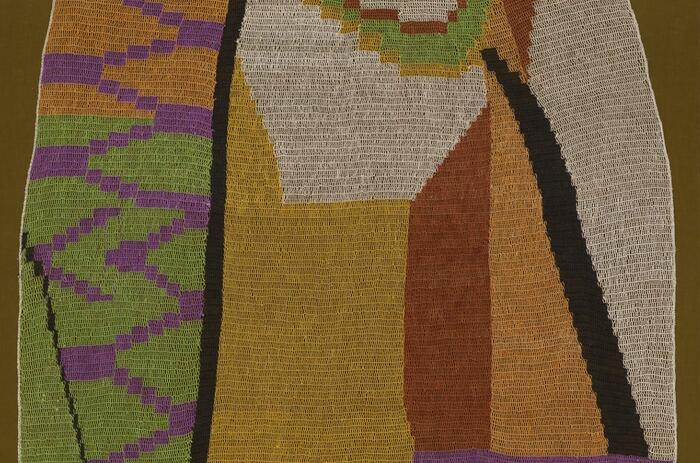
For the 60th International Exhibition of la Biennale di Venezia Stranieri Ovunque (Foregneirs Everywhere), artist Claudia Alarcón and art-collective Silät are presenting their reflections on being treated as foreigners in their own country.
CLAUDIA ALARCÓN AND SILÄT’S VENICE BIENNALE PARTICIPATION
For the 60th International Exhibition of la Biennale di Venezia Stranieri Ovunque (Foregneirs Everywhere), artist Claudia Alarcón and art-collective Silät are presenting their reflections on being treated as foreigners in their own country.
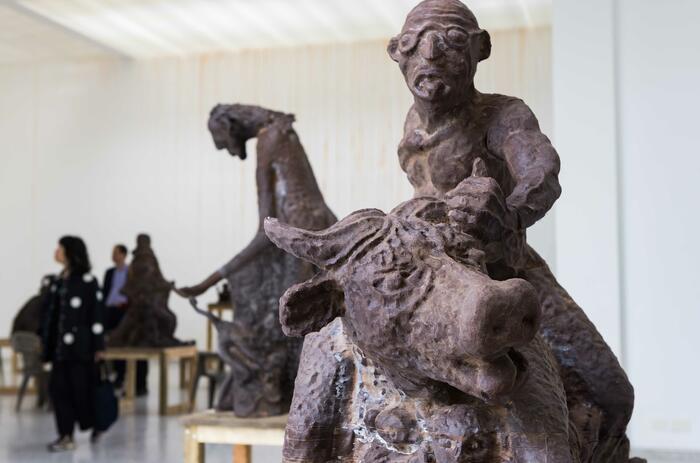
The International Celebration of Blasphemy and The Sacred is a presentation by Congolese artist collective Cercle d’Art des Travailleurs de Plantation Congolaise (CATPC) for the Dutch Pavilion at the 60th Venice Biennale.
DUTCH PAVILION AT THE VENICE BIENNALE
The International Celebration of Blasphemy and The Sacred is a presentation by Congolese artist collective Cercle d’Art des Travailleurs de Plantation Congolaise (CATPC) for the Dutch Pavilion at the 60th Venice Biennale.
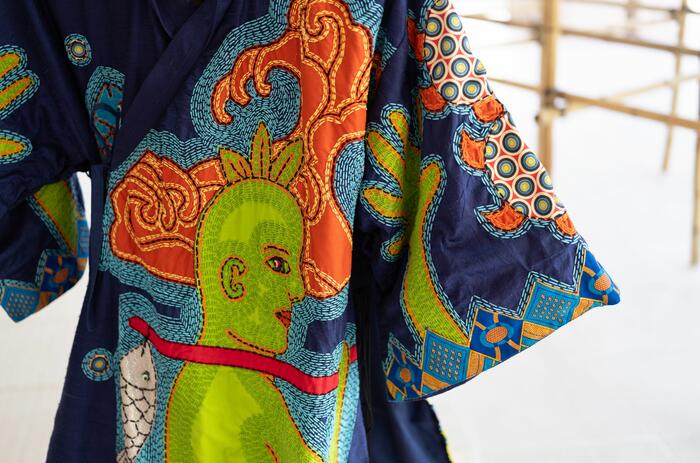
For the 60th International Art Exhibition – La Biennale di Venezia, the Nordic Countries Pavilion invites the audience to embark on a journey aboard a spectral dragon ship which occupies the light and open architecture of Sverre Fehn’s meditative masterpiece in the Giardini of the Biennale, Venice.
THE ALTERSEA OPERA: THE NORDIC COUNTRIES PAVILION'S PROPOSAL
For the 60th International Art Exhibition – La Biennale di Venezia, the Nordic Countries Pavilion invites the audience to embark on a journey aboard a spectral dragon ship which occupies the light and open architecture of Sverre Fehn’s meditative masterpiece in the Giardini of the Biennale, Venice.
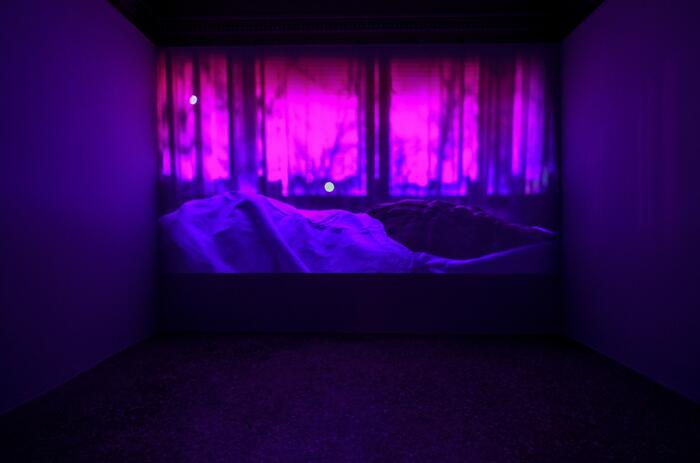
The Georgian Pavilion in the 60th Venice Biennale presented The Art of Seeing– States of Astronomy, a collaborative project presented by a team of Georgian and French curators and artists.
THE ART OF SEEING: GEORGIA’S PAVILION IN THE VENICE BIENNALE
The Georgian Pavilion in the 60th Venice Biennale presented The Art of Seeing– States of Astronomy, a collaborative project presented by a team of Georgian and French curators and artists.
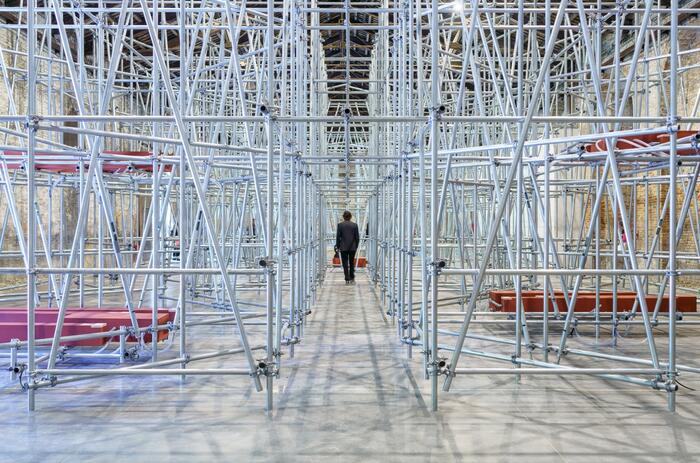
Due qui / To Hear is the project for the Italian Pavilion at the 60th Venice Biennale Curated by Luca Cerizza (with the assistance of Francesca Verga), it presents work that Massimo Bartolini has created in collaboration with several musicians (for the permanent installations) and writers (for the public program), employing the cooperative approach that is a hallmark of his practice.
DUE QUI/TO HEAR: ITALY’S PAVILION FOR THE VENICE BIENNALE
Due qui / To Hear is the project for the Italian Pavilion at the 60th Venice Biennale Curated by Luca Cerizza (with the assistance of Francesca Verga), it presents work that Massimo Bartolini has created in collaboration with several musicians (for the permanent installations) and writers (for the public program), employing the cooperative approach that is a hallmark of his practice.
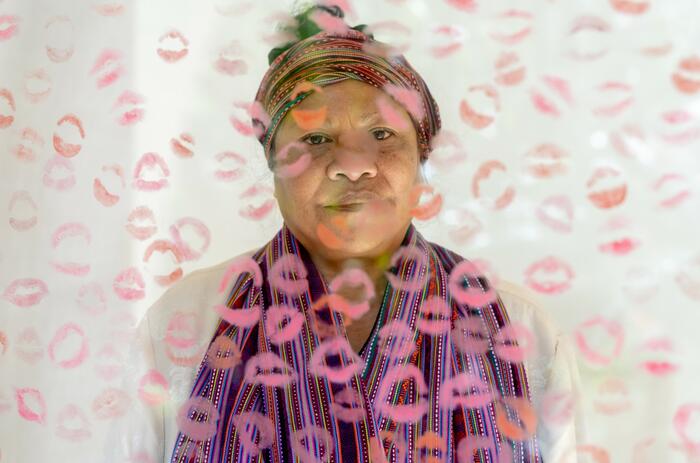
Maria Madeira is the artist representing Timor-Leste at the 60th International Venice Biennale. Timor-Leste’s inaugural pavilion coincides with the country’s 25th anniversary of independence. Commissioned by the Ministry of Youth, Sports, Arts and Culture, Democratic Republic of Timor-Leste and curated by Professor Natalie King OAM.
KISS AND DON’T TELL: TIMOR-LESTE IN THE VENICE BIENNALE
Maria Madeira is the artist representing Timor-Leste at the 60th International Venice Biennale. Timor-Leste’s inaugural pavilion coincides with the country’s 25th anniversary of independence. Commissioned by the Ministry of Youth, Sports, Arts and Culture, Democratic Republic of Timor-Leste and curated by Professor Natalie King OAM.
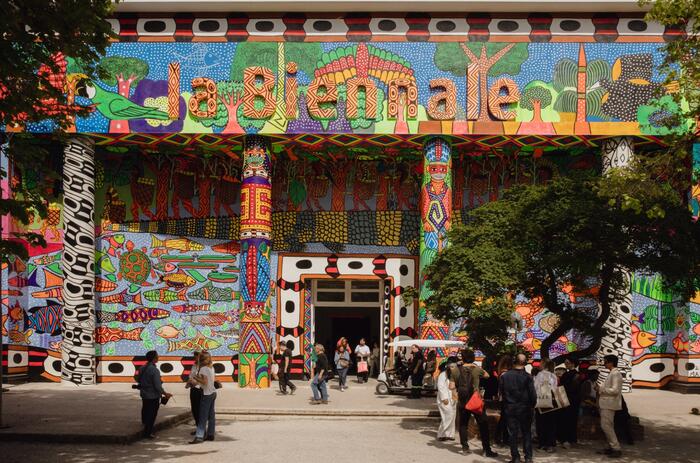
The exhibition of the 60th edition of the Venice Biennale - Stranieri Ovunque (Foregneirs Everywhere) - curated by Brazilian Adriano Pedrosa, presents 331 artists, significantly more than the usual number. More than a third of those artists come from Latin America.
FOREIGNERS EVERYWHERE: LATIN AMERICA TAKES OVER THE VENICE BIENNALE
The exhibition of the 60th edition of the Venice Biennale - Stranieri Ovunque (Foregneirs Everywhere) - curated by Brazilian Adriano Pedrosa, presents 331 artists, significantly more than the usual number. More than a third of those artists come from Latin America.
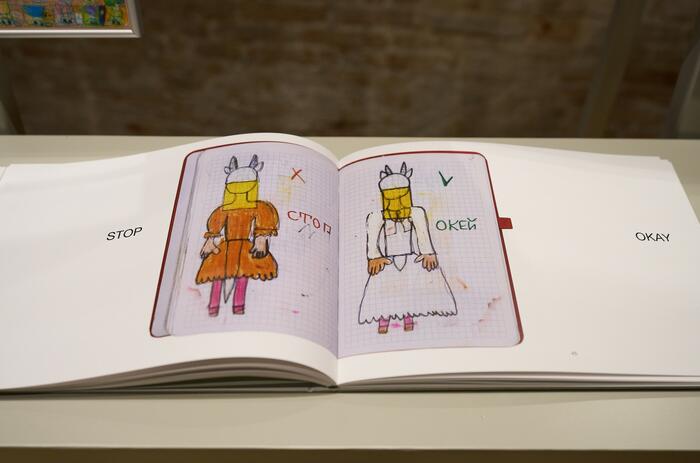
The Ukranian Pavilion addresses the othering effect of war, two years into the Russian Invasion, in Net Making at the 60th Venice Biennale.
UKRAINE AND THE EFECT OF WAR AT VENICE BIENNALE
The Ukranian Pavilion addresses the othering effect of war, two years into the Russian Invasion, in Net Making at the 60th Venice Biennale.
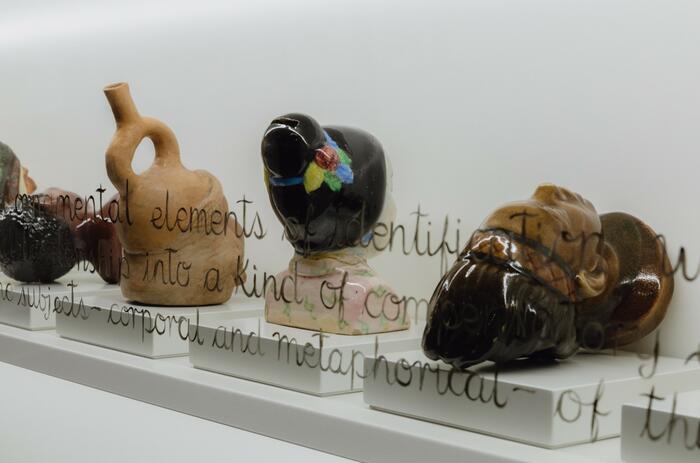
Spanish-Peruvian artist Sandra Gamarra Heshiki represents Spain at the Venice Biennale. It is the first time in 60 editions that an artist not born in Spain does so. Her project Pinacoteca migrante (Migrant gallery), questions colonial narratives and historical modes of representation.
PINACOTECA MIGRANTE: SPAIN AT THE VENICE BIENNALE
Spanish-Peruvian artist Sandra Gamarra Heshiki represents Spain at the Venice Biennale. It is the first time in 60 editions that an artist not born in Spain does so. Her project Pinacoteca migrante (Migrant gallery), questions colonial narratives and historical modes of representation.
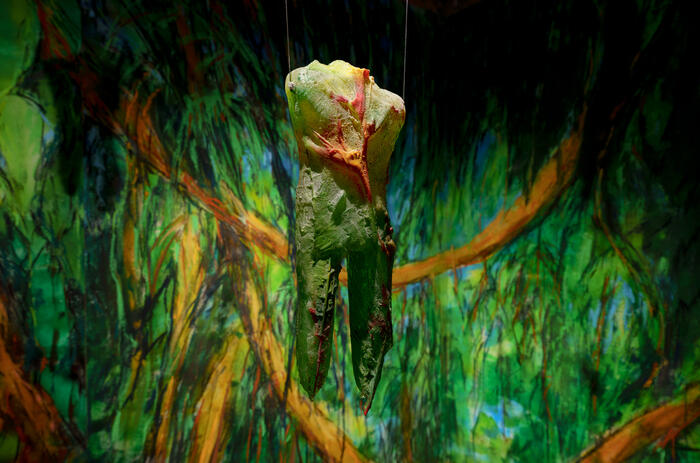
The Panama Pavilion at the 2024 Venice Art Biennale arises as a profound reflection on the enduring traces that migration leaves on individuals and their surroundings. Entitled Traces: On the Body and on the Land, this exhibition echoes the current migration crisis with a particular focus on the Panamanian context, interpreted by four artists through drawings, paintings, collages, glass sculptures, and installations.
TRACES – PANAMÁ’S DEBUT AT THE VENICE BIENNALE
The Panama Pavilion at the 2024 Venice Art Biennale arises as a profound reflection on the enduring traces that migration leaves on individuals and their surroundings. Entitled Traces: On the Body and on the Land, this exhibition echoes the current migration crisis with a particular focus on the Panamanian context, interpreted by four artists through drawings, paintings, collages, glass sculptures, and installations.
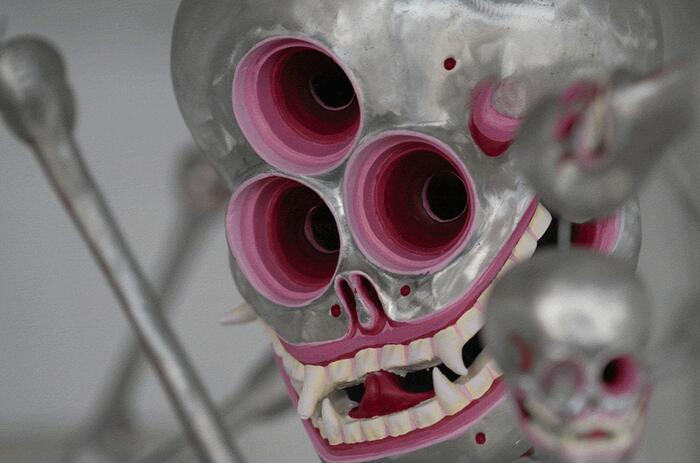
The Mongolian Pavilion at the Venice Biennale presents artist Ochirbold Ayurzana with the exhibition Discovering the Present from the Future. The proposal is curated by Oyuntuya Oyunjargal, the Cultural Envoy of Mongolia to Germany, and co-curated by Gregor Jansen, director of the Kunsthalle Düsseldorf in Germany.
OCHIRBOLD AYURZANA AT THE MONGOLIAN PAVILION
The Mongolian Pavilion at the Venice Biennale presents artist Ochirbold Ayurzana with the exhibition Discovering the Present from the Future. The proposal is curated by Oyuntuya Oyunjargal, the Cultural Envoy of Mongolia to Germany, and co-curated by Gregor Jansen, director of the Kunsthalle Düsseldorf in Germany.

For the 60th International Venice Biennale, Nemes designed the project as an immersive, painting-based Gesamtkunstwerk that expands the genre of painting and extends it to other media. Project curated by Róna Kopeczky.
TECHNO ZEN BY MÁRTON NEMEZ: THE HUNGARIAN PAVILION IN VENICE BIENNALE
For the 60th International Venice Biennale, Nemes designed the project as an immersive, painting-based Gesamtkunstwerk that expands the genre of painting and extends it to other media. Project curated by Róna Kopeczky.

Juana Subercaseaux, a Chilean artist based in Mexico City, presents Esto es Eso, her first exhibition at OMR, showcasing her latest works that intertwine a feminine perspective with the intimate, the mystical, the ephemeral, and the spiritual aspects of nature.

For the 60th International Exhibition of la Biennale di Venezia Stranieri Ovunque (Foregneirs Everywhere), artist Claudia Alarcón and art-collective Silät are presenting their reflections on being treated as foreigners in their own country.
CLAUDIA ALARCÓN AND SILÄT’S VENICE BIENNALE PARTICIPATION
For the 60th International Exhibition of la Biennale di Venezia Stranieri Ovunque (Foregneirs Everywhere), artist Claudia Alarcón and art-collective Silät are presenting their reflections on being treated as foreigners in their own country.

The International Celebration of Blasphemy and The Sacred is a presentation by Congolese artist collective Cercle d’Art des Travailleurs de Plantation Congolaise (CATPC) for the Dutch Pavilion at the 60th Venice Biennale.
DUTCH PAVILION AT THE VENICE BIENNALE
The International Celebration of Blasphemy and The Sacred is a presentation by Congolese artist collective Cercle d’Art des Travailleurs de Plantation Congolaise (CATPC) for the Dutch Pavilion at the 60th Venice Biennale.

For the 60th International Art Exhibition – La Biennale di Venezia, the Nordic Countries Pavilion invites the audience to embark on a journey aboard a spectral dragon ship which occupies the light and open architecture of Sverre Fehn’s meditative masterpiece in the Giardini of the Biennale, Venice.
THE ALTERSEA OPERA: THE NORDIC COUNTRIES PAVILION'S PROPOSAL
For the 60th International Art Exhibition – La Biennale di Venezia, the Nordic Countries Pavilion invites the audience to embark on a journey aboard a spectral dragon ship which occupies the light and open architecture of Sverre Fehn’s meditative masterpiece in the Giardini of the Biennale, Venice.

The Georgian Pavilion in the 60th Venice Biennale presented The Art of Seeing– States of Astronomy, a collaborative project presented by a team of Georgian and French curators and artists.
THE ART OF SEEING: GEORGIA’S PAVILION IN THE VENICE BIENNALE
The Georgian Pavilion in the 60th Venice Biennale presented The Art of Seeing– States of Astronomy, a collaborative project presented by a team of Georgian and French curators and artists.

Due qui / To Hear is the project for the Italian Pavilion at the 60th Venice Biennale Curated by Luca Cerizza (with the assistance of Francesca Verga), it presents work that Massimo Bartolini has created in collaboration with several musicians (for the permanent installations) and writers (for the public program), employing the cooperative approach that is a hallmark of his practice.
DUE QUI/TO HEAR: ITALY’S PAVILION FOR THE VENICE BIENNALE
Due qui / To Hear is the project for the Italian Pavilion at the 60th Venice Biennale Curated by Luca Cerizza (with the assistance of Francesca Verga), it presents work that Massimo Bartolini has created in collaboration with several musicians (for the permanent installations) and writers (for the public program), employing the cooperative approach that is a hallmark of his practice.

Maria Madeira is the artist representing Timor-Leste at the 60th International Venice Biennale. Timor-Leste’s inaugural pavilion coincides with the country’s 25th anniversary of independence. Commissioned by the Ministry of Youth, Sports, Arts and Culture, Democratic Republic of Timor-Leste and curated by Professor Natalie King OAM.
KISS AND DON’T TELL: TIMOR-LESTE IN THE VENICE BIENNALE
Maria Madeira is the artist representing Timor-Leste at the 60th International Venice Biennale. Timor-Leste’s inaugural pavilion coincides with the country’s 25th anniversary of independence. Commissioned by the Ministry of Youth, Sports, Arts and Culture, Democratic Republic of Timor-Leste and curated by Professor Natalie King OAM.

The exhibition of the 60th edition of the Venice Biennale - Stranieri Ovunque (Foregneirs Everywhere) - curated by Brazilian Adriano Pedrosa, presents 331 artists, significantly more than the usual number. More than a third of those artists come from Latin America.
FOREIGNERS EVERYWHERE: LATIN AMERICA TAKES OVER THE VENICE BIENNALE
The exhibition of the 60th edition of the Venice Biennale - Stranieri Ovunque (Foregneirs Everywhere) - curated by Brazilian Adriano Pedrosa, presents 331 artists, significantly more than the usual number. More than a third of those artists come from Latin America.

The Ukranian Pavilion addresses the othering effect of war, two years into the Russian Invasion, in Net Making at the 60th Venice Biennale.
UKRAINE AND THE EFECT OF WAR AT VENICE BIENNALE
The Ukranian Pavilion addresses the othering effect of war, two years into the Russian Invasion, in Net Making at the 60th Venice Biennale.

Spanish-Peruvian artist Sandra Gamarra Heshiki represents Spain at the Venice Biennale. It is the first time in 60 editions that an artist not born in Spain does so. Her project Pinacoteca migrante (Migrant gallery), questions colonial narratives and historical modes of representation.
PINACOTECA MIGRANTE: SPAIN AT THE VENICE BIENNALE
Spanish-Peruvian artist Sandra Gamarra Heshiki represents Spain at the Venice Biennale. It is the first time in 60 editions that an artist not born in Spain does so. Her project Pinacoteca migrante (Migrant gallery), questions colonial narratives and historical modes of representation.

The Panama Pavilion at the 2024 Venice Art Biennale arises as a profound reflection on the enduring traces that migration leaves on individuals and their surroundings. Entitled Traces: On the Body and on the Land, this exhibition echoes the current migration crisis with a particular focus on the Panamanian context, interpreted by four artists through drawings, paintings, collages, glass sculptures, and installations.
TRACES – PANAMÁ’S DEBUT AT THE VENICE BIENNALE
The Panama Pavilion at the 2024 Venice Art Biennale arises as a profound reflection on the enduring traces that migration leaves on individuals and their surroundings. Entitled Traces: On the Body and on the Land, this exhibition echoes the current migration crisis with a particular focus on the Panamanian context, interpreted by four artists through drawings, paintings, collages, glass sculptures, and installations.

The Mongolian Pavilion at the Venice Biennale presents artist Ochirbold Ayurzana with the exhibition Discovering the Present from the Future. The proposal is curated by Oyuntuya Oyunjargal, the Cultural Envoy of Mongolia to Germany, and co-curated by Gregor Jansen, director of the Kunsthalle Düsseldorf in Germany.
OCHIRBOLD AYURZANA AT THE MONGOLIAN PAVILION
The Mongolian Pavilion at the Venice Biennale presents artist Ochirbold Ayurzana with the exhibition Discovering the Present from the Future. The proposal is curated by Oyuntuya Oyunjargal, the Cultural Envoy of Mongolia to Germany, and co-curated by Gregor Jansen, director of the Kunsthalle Düsseldorf in Germany.

For the 60th International Venice Biennale, Nemes designed the project as an immersive, painting-based Gesamtkunstwerk that expands the genre of painting and extends it to other media. Project curated by Róna Kopeczky.
TECHNO ZEN BY MÁRTON NEMEZ: THE HUNGARIAN PAVILION IN VENICE BIENNALE
For the 60th International Venice Biennale, Nemes designed the project as an immersive, painting-based Gesamtkunstwerk that expands the genre of painting and extends it to other media. Project curated by Róna Kopeczky.

Juana Subercaseaux, a Chilean artist based in Mexico City, presents Esto es Eso, her first exhibition at OMR, showcasing her latest works that intertwine a feminine perspective with the intimate, the mystical, the ephemeral, and the spiritual aspects of nature.

For the 60th International Exhibition of la Biennale di Venezia Stranieri Ovunque (Foregneirs Everywhere), artist Claudia Alarcón and art-collective Silät are presenting their reflections on being treated as foreigners in their own country.
CLAUDIA ALARCÓN AND SILÄT’S VENICE BIENNALE PARTICIPATION
For the 60th International Exhibition of la Biennale di Venezia Stranieri Ovunque (Foregneirs Everywhere), artist Claudia Alarcón and art-collective Silät are presenting their reflections on being treated as foreigners in their own country.

The International Celebration of Blasphemy and The Sacred is a presentation by Congolese artist collective Cercle d’Art des Travailleurs de Plantation Congolaise (CATPC) for the Dutch Pavilion at the 60th Venice Biennale.
DUTCH PAVILION AT THE VENICE BIENNALE
The International Celebration of Blasphemy and The Sacred is a presentation by Congolese artist collective Cercle d’Art des Travailleurs de Plantation Congolaise (CATPC) for the Dutch Pavilion at the 60th Venice Biennale.

For the 60th International Art Exhibition – La Biennale di Venezia, the Nordic Countries Pavilion invites the audience to embark on a journey aboard a spectral dragon ship which occupies the light and open architecture of Sverre Fehn’s meditative masterpiece in the Giardini of the Biennale, Venice.
THE ALTERSEA OPERA: THE NORDIC COUNTRIES PAVILION'S PROPOSAL
For the 60th International Art Exhibition – La Biennale di Venezia, the Nordic Countries Pavilion invites the audience to embark on a journey aboard a spectral dragon ship which occupies the light and open architecture of Sverre Fehn’s meditative masterpiece in the Giardini of the Biennale, Venice.

The Georgian Pavilion in the 60th Venice Biennale presented The Art of Seeing– States of Astronomy, a collaborative project presented by a team of Georgian and French curators and artists.
THE ART OF SEEING: GEORGIA’S PAVILION IN THE VENICE BIENNALE
The Georgian Pavilion in the 60th Venice Biennale presented The Art of Seeing– States of Astronomy, a collaborative project presented by a team of Georgian and French curators and artists.

Due qui / To Hear is the project for the Italian Pavilion at the 60th Venice Biennale Curated by Luca Cerizza (with the assistance of Francesca Verga), it presents work that Massimo Bartolini has created in collaboration with several musicians (for the permanent installations) and writers (for the public program), employing the cooperative approach that is a hallmark of his practice.
DUE QUI/TO HEAR: ITALY’S PAVILION FOR THE VENICE BIENNALE
Due qui / To Hear is the project for the Italian Pavilion at the 60th Venice Biennale Curated by Luca Cerizza (with the assistance of Francesca Verga), it presents work that Massimo Bartolini has created in collaboration with several musicians (for the permanent installations) and writers (for the public program), employing the cooperative approach that is a hallmark of his practice.

Maria Madeira is the artist representing Timor-Leste at the 60th International Venice Biennale. Timor-Leste’s inaugural pavilion coincides with the country’s 25th anniversary of independence. Commissioned by the Ministry of Youth, Sports, Arts and Culture, Democratic Republic of Timor-Leste and curated by Professor Natalie King OAM.
KISS AND DON’T TELL: TIMOR-LESTE IN THE VENICE BIENNALE
Maria Madeira is the artist representing Timor-Leste at the 60th International Venice Biennale. Timor-Leste’s inaugural pavilion coincides with the country’s 25th anniversary of independence. Commissioned by the Ministry of Youth, Sports, Arts and Culture, Democratic Republic of Timor-Leste and curated by Professor Natalie King OAM.

The exhibition of the 60th edition of the Venice Biennale - Stranieri Ovunque (Foregneirs Everywhere) - curated by Brazilian Adriano Pedrosa, presents 331 artists, significantly more than the usual number. More than a third of those artists come from Latin America.
FOREIGNERS EVERYWHERE: LATIN AMERICA TAKES OVER THE VENICE BIENNALE
The exhibition of the 60th edition of the Venice Biennale - Stranieri Ovunque (Foregneirs Everywhere) - curated by Brazilian Adriano Pedrosa, presents 331 artists, significantly more than the usual number. More than a third of those artists come from Latin America.

The Ukranian Pavilion addresses the othering effect of war, two years into the Russian Invasion, in Net Making at the 60th Venice Biennale.
UKRAINE AND THE EFECT OF WAR AT VENICE BIENNALE
The Ukranian Pavilion addresses the othering effect of war, two years into the Russian Invasion, in Net Making at the 60th Venice Biennale.

Spanish-Peruvian artist Sandra Gamarra Heshiki represents Spain at the Venice Biennale. It is the first time in 60 editions that an artist not born in Spain does so. Her project Pinacoteca migrante (Migrant gallery), questions colonial narratives and historical modes of representation.
PINACOTECA MIGRANTE: SPAIN AT THE VENICE BIENNALE
Spanish-Peruvian artist Sandra Gamarra Heshiki represents Spain at the Venice Biennale. It is the first time in 60 editions that an artist not born in Spain does so. Her project Pinacoteca migrante (Migrant gallery), questions colonial narratives and historical modes of representation.

The Panama Pavilion at the 2024 Venice Art Biennale arises as a profound reflection on the enduring traces that migration leaves on individuals and their surroundings. Entitled Traces: On the Body and on the Land, this exhibition echoes the current migration crisis with a particular focus on the Panamanian context, interpreted by four artists through drawings, paintings, collages, glass sculptures, and installations.
TRACES – PANAMÁ’S DEBUT AT THE VENICE BIENNALE
The Panama Pavilion at the 2024 Venice Art Biennale arises as a profound reflection on the enduring traces that migration leaves on individuals and their surroundings. Entitled Traces: On the Body and on the Land, this exhibition echoes the current migration crisis with a particular focus on the Panamanian context, interpreted by four artists through drawings, paintings, collages, glass sculptures, and installations.

The Mongolian Pavilion at the Venice Biennale presents artist Ochirbold Ayurzana with the exhibition Discovering the Present from the Future. The proposal is curated by Oyuntuya Oyunjargal, the Cultural Envoy of Mongolia to Germany, and co-curated by Gregor Jansen, director of the Kunsthalle Düsseldorf in Germany.
OCHIRBOLD AYURZANA AT THE MONGOLIAN PAVILION
The Mongolian Pavilion at the Venice Biennale presents artist Ochirbold Ayurzana with the exhibition Discovering the Present from the Future. The proposal is curated by Oyuntuya Oyunjargal, the Cultural Envoy of Mongolia to Germany, and co-curated by Gregor Jansen, director of the Kunsthalle Düsseldorf in Germany.

For the 60th International Venice Biennale, Nemes designed the project as an immersive, painting-based Gesamtkunstwerk that expands the genre of painting and extends it to other media. Project curated by Róna Kopeczky.
TECHNO ZEN BY MÁRTON NEMEZ: THE HUNGARIAN PAVILION IN VENICE BIENNALE
For the 60th International Venice Biennale, Nemes designed the project as an immersive, painting-based Gesamtkunstwerk that expands the genre of painting and extends it to other media. Project curated by Róna Kopeczky.

Juana Subercaseaux, a Chilean artist based in Mexico City, presents Esto es Eso, her first exhibition at OMR, showcasing her latest works that intertwine a feminine perspective with the intimate, the mystical, the ephemeral, and the spiritual aspects of nature.

For the 60th International Exhibition of la Biennale di Venezia Stranieri Ovunque (Foregneirs Everywhere), artist Claudia Alarcón and art-collective Silät are presenting their reflections on being treated as foreigners in their own country.
CLAUDIA ALARCÓN AND SILÄT’S VENICE BIENNALE PARTICIPATION
For the 60th International Exhibition of la Biennale di Venezia Stranieri Ovunque (Foregneirs Everywhere), artist Claudia Alarcón and art-collective Silät are presenting their reflections on being treated as foreigners in their own country.

The International Celebration of Blasphemy and The Sacred is a presentation by Congolese artist collective Cercle d’Art des Travailleurs de Plantation Congolaise (CATPC) for the Dutch Pavilion at the 60th Venice Biennale.
DUTCH PAVILION AT THE VENICE BIENNALE
The International Celebration of Blasphemy and The Sacred is a presentation by Congolese artist collective Cercle d’Art des Travailleurs de Plantation Congolaise (CATPC) for the Dutch Pavilion at the 60th Venice Biennale.

For the 60th International Art Exhibition – La Biennale di Venezia, the Nordic Countries Pavilion invites the audience to embark on a journey aboard a spectral dragon ship which occupies the light and open architecture of Sverre Fehn’s meditative masterpiece in the Giardini of the Biennale, Venice.
THE ALTERSEA OPERA: THE NORDIC COUNTRIES PAVILION'S PROPOSAL
For the 60th International Art Exhibition – La Biennale di Venezia, the Nordic Countries Pavilion invites the audience to embark on a journey aboard a spectral dragon ship which occupies the light and open architecture of Sverre Fehn’s meditative masterpiece in the Giardini of the Biennale, Venice.

The Georgian Pavilion in the 60th Venice Biennale presented The Art of Seeing– States of Astronomy, a collaborative project presented by a team of Georgian and French curators and artists.
THE ART OF SEEING: GEORGIA’S PAVILION IN THE VENICE BIENNALE
The Georgian Pavilion in the 60th Venice Biennale presented The Art of Seeing– States of Astronomy, a collaborative project presented by a team of Georgian and French curators and artists.

Due qui / To Hear is the project for the Italian Pavilion at the 60th Venice Biennale Curated by Luca Cerizza (with the assistance of Francesca Verga), it presents work that Massimo Bartolini has created in collaboration with several musicians (for the permanent installations) and writers (for the public program), employing the cooperative approach that is a hallmark of his practice.
DUE QUI/TO HEAR: ITALY’S PAVILION FOR THE VENICE BIENNALE
Due qui / To Hear is the project for the Italian Pavilion at the 60th Venice Biennale Curated by Luca Cerizza (with the assistance of Francesca Verga), it presents work that Massimo Bartolini has created in collaboration with several musicians (for the permanent installations) and writers (for the public program), employing the cooperative approach that is a hallmark of his practice.

Maria Madeira is the artist representing Timor-Leste at the 60th International Venice Biennale. Timor-Leste’s inaugural pavilion coincides with the country’s 25th anniversary of independence. Commissioned by the Ministry of Youth, Sports, Arts and Culture, Democratic Republic of Timor-Leste and curated by Professor Natalie King OAM.
KISS AND DON’T TELL: TIMOR-LESTE IN THE VENICE BIENNALE
Maria Madeira is the artist representing Timor-Leste at the 60th International Venice Biennale. Timor-Leste’s inaugural pavilion coincides with the country’s 25th anniversary of independence. Commissioned by the Ministry of Youth, Sports, Arts and Culture, Democratic Republic of Timor-Leste and curated by Professor Natalie King OAM.

The exhibition of the 60th edition of the Venice Biennale - Stranieri Ovunque (Foregneirs Everywhere) - curated by Brazilian Adriano Pedrosa, presents 331 artists, significantly more than the usual number. More than a third of those artists come from Latin America.
FOREIGNERS EVERYWHERE: LATIN AMERICA TAKES OVER THE VENICE BIENNALE
The exhibition of the 60th edition of the Venice Biennale - Stranieri Ovunque (Foregneirs Everywhere) - curated by Brazilian Adriano Pedrosa, presents 331 artists, significantly more than the usual number. More than a third of those artists come from Latin America.

The Ukranian Pavilion addresses the othering effect of war, two years into the Russian Invasion, in Net Making at the 60th Venice Biennale.
UKRAINE AND THE EFECT OF WAR AT VENICE BIENNALE
The Ukranian Pavilion addresses the othering effect of war, two years into the Russian Invasion, in Net Making at the 60th Venice Biennale.

Spanish-Peruvian artist Sandra Gamarra Heshiki represents Spain at the Venice Biennale. It is the first time in 60 editions that an artist not born in Spain does so. Her project Pinacoteca migrante (Migrant gallery), questions colonial narratives and historical modes of representation.
PINACOTECA MIGRANTE: SPAIN AT THE VENICE BIENNALE
Spanish-Peruvian artist Sandra Gamarra Heshiki represents Spain at the Venice Biennale. It is the first time in 60 editions that an artist not born in Spain does so. Her project Pinacoteca migrante (Migrant gallery), questions colonial narratives and historical modes of representation.

The Panama Pavilion at the 2024 Venice Art Biennale arises as a profound reflection on the enduring traces that migration leaves on individuals and their surroundings. Entitled Traces: On the Body and on the Land, this exhibition echoes the current migration crisis with a particular focus on the Panamanian context, interpreted by four artists through drawings, paintings, collages, glass sculptures, and installations.
TRACES – PANAMÁ’S DEBUT AT THE VENICE BIENNALE
The Panama Pavilion at the 2024 Venice Art Biennale arises as a profound reflection on the enduring traces that migration leaves on individuals and their surroundings. Entitled Traces: On the Body and on the Land, this exhibition echoes the current migration crisis with a particular focus on the Panamanian context, interpreted by four artists through drawings, paintings, collages, glass sculptures, and installations.

The Mongolian Pavilion at the Venice Biennale presents artist Ochirbold Ayurzana with the exhibition Discovering the Present from the Future. The proposal is curated by Oyuntuya Oyunjargal, the Cultural Envoy of Mongolia to Germany, and co-curated by Gregor Jansen, director of the Kunsthalle Düsseldorf in Germany.
OCHIRBOLD AYURZANA AT THE MONGOLIAN PAVILION
The Mongolian Pavilion at the Venice Biennale presents artist Ochirbold Ayurzana with the exhibition Discovering the Present from the Future. The proposal is curated by Oyuntuya Oyunjargal, the Cultural Envoy of Mongolia to Germany, and co-curated by Gregor Jansen, director of the Kunsthalle Düsseldorf in Germany.

For the 60th International Venice Biennale, Nemes designed the project as an immersive, painting-based Gesamtkunstwerk that expands the genre of painting and extends it to other media. Project curated by Róna Kopeczky.
TECHNO ZEN BY MÁRTON NEMEZ: THE HUNGARIAN PAVILION IN VENICE BIENNALE
For the 60th International Venice Biennale, Nemes designed the project as an immersive, painting-based Gesamtkunstwerk that expands the genre of painting and extends it to other media. Project curated by Róna Kopeczky.

Juana Subercaseaux, a Chilean artist based in Mexico City, presents Esto es Eso, her first exhibition at OMR, showcasing her latest works that intertwine a feminine perspective with the intimate, the mystical, the ephemeral, and the spiritual aspects of nature.

For the 60th International Exhibition of la Biennale di Venezia Stranieri Ovunque (Foregneirs Everywhere), artist Claudia Alarcón and art-collective Silät are presenting their reflections on being treated as foreigners in their own country.
CLAUDIA ALARCÓN AND SILÄT’S VENICE BIENNALE PARTICIPATION
For the 60th International Exhibition of la Biennale di Venezia Stranieri Ovunque (Foregneirs Everywhere), artist Claudia Alarcón and art-collective Silät are presenting their reflections on being treated as foreigners in their own country.

The International Celebration of Blasphemy and The Sacred is a presentation by Congolese artist collective Cercle d’Art des Travailleurs de Plantation Congolaise (CATPC) for the Dutch Pavilion at the 60th Venice Biennale.
DUTCH PAVILION AT THE VENICE BIENNALE
The International Celebration of Blasphemy and The Sacred is a presentation by Congolese artist collective Cercle d’Art des Travailleurs de Plantation Congolaise (CATPC) for the Dutch Pavilion at the 60th Venice Biennale.

For the 60th International Art Exhibition – La Biennale di Venezia, the Nordic Countries Pavilion invites the audience to embark on a journey aboard a spectral dragon ship which occupies the light and open architecture of Sverre Fehn’s meditative masterpiece in the Giardini of the Biennale, Venice.
THE ALTERSEA OPERA: THE NORDIC COUNTRIES PAVILION'S PROPOSAL
For the 60th International Art Exhibition – La Biennale di Venezia, the Nordic Countries Pavilion invites the audience to embark on a journey aboard a spectral dragon ship which occupies the light and open architecture of Sverre Fehn’s meditative masterpiece in the Giardini of the Biennale, Venice.

The Georgian Pavilion in the 60th Venice Biennale presented The Art of Seeing– States of Astronomy, a collaborative project presented by a team of Georgian and French curators and artists.
THE ART OF SEEING: GEORGIA’S PAVILION IN THE VENICE BIENNALE
The Georgian Pavilion in the 60th Venice Biennale presented The Art of Seeing– States of Astronomy, a collaborative project presented by a team of Georgian and French curators and artists.

Due qui / To Hear is the project for the Italian Pavilion at the 60th Venice Biennale Curated by Luca Cerizza (with the assistance of Francesca Verga), it presents work that Massimo Bartolini has created in collaboration with several musicians (for the permanent installations) and writers (for the public program), employing the cooperative approach that is a hallmark of his practice.
DUE QUI/TO HEAR: ITALY’S PAVILION FOR THE VENICE BIENNALE
Due qui / To Hear is the project for the Italian Pavilion at the 60th Venice Biennale Curated by Luca Cerizza (with the assistance of Francesca Verga), it presents work that Massimo Bartolini has created in collaboration with several musicians (for the permanent installations) and writers (for the public program), employing the cooperative approach that is a hallmark of his practice.

Maria Madeira is the artist representing Timor-Leste at the 60th International Venice Biennale. Timor-Leste’s inaugural pavilion coincides with the country’s 25th anniversary of independence. Commissioned by the Ministry of Youth, Sports, Arts and Culture, Democratic Republic of Timor-Leste and curated by Professor Natalie King OAM.
KISS AND DON’T TELL: TIMOR-LESTE IN THE VENICE BIENNALE
Maria Madeira is the artist representing Timor-Leste at the 60th International Venice Biennale. Timor-Leste’s inaugural pavilion coincides with the country’s 25th anniversary of independence. Commissioned by the Ministry of Youth, Sports, Arts and Culture, Democratic Republic of Timor-Leste and curated by Professor Natalie King OAM.

The exhibition of the 60th edition of the Venice Biennale - Stranieri Ovunque (Foregneirs Everywhere) - curated by Brazilian Adriano Pedrosa, presents 331 artists, significantly more than the usual number. More than a third of those artists come from Latin America.
FOREIGNERS EVERYWHERE: LATIN AMERICA TAKES OVER THE VENICE BIENNALE
The exhibition of the 60th edition of the Venice Biennale - Stranieri Ovunque (Foregneirs Everywhere) - curated by Brazilian Adriano Pedrosa, presents 331 artists, significantly more than the usual number. More than a third of those artists come from Latin America.

The Ukranian Pavilion addresses the othering effect of war, two years into the Russian Invasion, in Net Making at the 60th Venice Biennale.
UKRAINE AND THE EFECT OF WAR AT VENICE BIENNALE
The Ukranian Pavilion addresses the othering effect of war, two years into the Russian Invasion, in Net Making at the 60th Venice Biennale.

Spanish-Peruvian artist Sandra Gamarra Heshiki represents Spain at the Venice Biennale. It is the first time in 60 editions that an artist not born in Spain does so. Her project Pinacoteca migrante (Migrant gallery), questions colonial narratives and historical modes of representation.
PINACOTECA MIGRANTE: SPAIN AT THE VENICE BIENNALE
Spanish-Peruvian artist Sandra Gamarra Heshiki represents Spain at the Venice Biennale. It is the first time in 60 editions that an artist not born in Spain does so. Her project Pinacoteca migrante (Migrant gallery), questions colonial narratives and historical modes of representation.

The Panama Pavilion at the 2024 Venice Art Biennale arises as a profound reflection on the enduring traces that migration leaves on individuals and their surroundings. Entitled Traces: On the Body and on the Land, this exhibition echoes the current migration crisis with a particular focus on the Panamanian context, interpreted by four artists through drawings, paintings, collages, glass sculptures, and installations.
TRACES – PANAMÁ’S DEBUT AT THE VENICE BIENNALE
The Panama Pavilion at the 2024 Venice Art Biennale arises as a profound reflection on the enduring traces that migration leaves on individuals and their surroundings. Entitled Traces: On the Body and on the Land, this exhibition echoes the current migration crisis with a particular focus on the Panamanian context, interpreted by four artists through drawings, paintings, collages, glass sculptures, and installations.

The Mongolian Pavilion at the Venice Biennale presents artist Ochirbold Ayurzana with the exhibition Discovering the Present from the Future. The proposal is curated by Oyuntuya Oyunjargal, the Cultural Envoy of Mongolia to Germany, and co-curated by Gregor Jansen, director of the Kunsthalle Düsseldorf in Germany.
OCHIRBOLD AYURZANA AT THE MONGOLIAN PAVILION
The Mongolian Pavilion at the Venice Biennale presents artist Ochirbold Ayurzana with the exhibition Discovering the Present from the Future. The proposal is curated by Oyuntuya Oyunjargal, the Cultural Envoy of Mongolia to Germany, and co-curated by Gregor Jansen, director of the Kunsthalle Düsseldorf in Germany.




